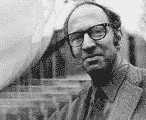- He does not believe that science proceeds from one advancement to another, in an even and unbroken process.

- Kuhn’s view is that scientists work within an unquestioned theory or set of beliefs: Mental Paradigm
- This mental paradigm (accepted view) shapes scientists’ thinking as they work.
- Within this set of beliefs, scientists search for information and work out the details of an accepted theory or set of beliefs.
- At some point an existing paradigm fails to explain events properly, because there are too many exceptions.
- When an alternative point of view, theory, or paradigm emerges, with a more satisfactory explanation of events, a scientific revolution occurs.
- Kuhn, like Popper, drew connections between science and society. (Political revolutions occur when existing ideas and institutions no longer work. New ideas emerge and they produce a new political paradigm)
- Kuhn suggests that science is shaped by historical and social forces. (Scientists are not immune from the generally accepted ideas of their time and place)
Examples:
- In Hitler’s Germany, the racist doctrines of the Nazi regime produced erroneous paradigms and bad science.
The controversy over global warming in industrial societies is often shaped by social and economic factors
The Structure of Scientific Revolutions
Thomas Kuhn
In the development of any science, the first received paradigm is usually felt to account quite successfully for most of the observations and experiments easily accessible to that science’s practitioners…[This] leads, on the one hand, to an immense restriction of the scientist’s vision and to a considerable resistance to paradigm change. The scientist has become increasingly rigid. On the other hand, within those areas to which the paradigm directs the attention of the group, normal science leads to a detail of information and to a precision of the observation-theory match that could be achieved in no other way….
So long as the tools a paradigm provides continue to prove capable of solving the problems it defines, science moves fastest and penetrates most deeply through confident employment of those tools. The reason is clear. As in manufacture so in science, retooling is an extravagance to be reserved for the occasion that demands it. The significance of crises is the indication they provide that an occasion for retooling has arrived….
Let us … ask next how scientists respond to [crises]…. Though they may begin to lose faith and then to consider alternatives, they do not renounce the paradigm that has led them into crisis…. Once it has achieved the status of a paradigm, a scientific theory is declared invalid only it an alternate candidate is available to take its place…. The decision to reject one paradigm is always simultaneously the decision to accept another….
Then … an anomaly [an out of the ordinary or unexpected observation] comes to seem more than just another puzzle of normal science, the transition to crisis and extraordinary science has begun. The anomaly itself now comes to be more generally recognized as such by the profession. More and more attention is devoted to it by more and more of the field’s most eminent men.
[Thomas Kuhn, The Structure of Scientific Revolutions, 2nd ed., 1962. Chicago: University of Chicago Press, 1970, chap. 6-8]
